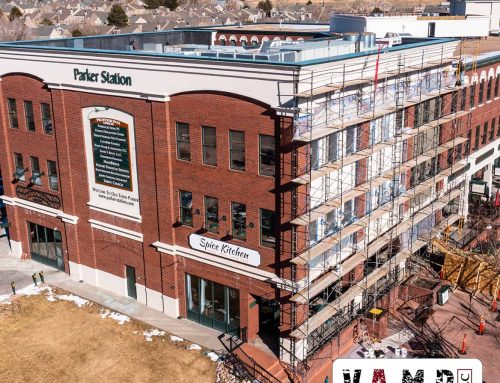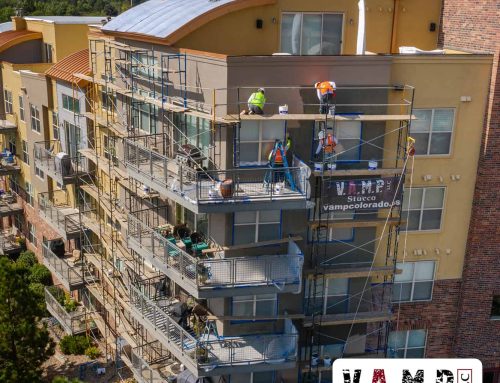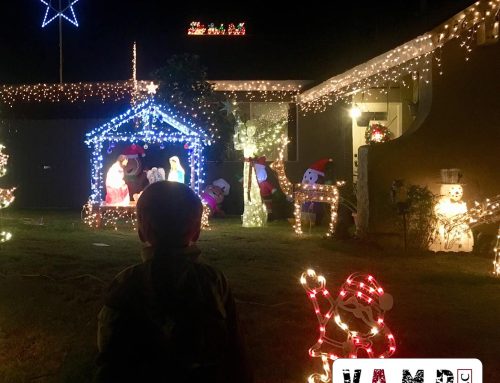Birds, Beasts, and Bugs: The Unexpected Enemies of Your Stucco Home
Stucco, a popular choice for home exteriors, is known for its durability and aesthetic appeal. However, it’s not immune to the effects of nature. Wildlife, particularly birds and other small creatures is a lesser-known threat to stucco. These animals can cause significant damage to your home’s stucco, leading to costly repairs and a decrease in your home’s curb appeal.
Protecting your stucco from wildlife is crucial for maintaining its longevity and aesthetics. Birds, squirrels, and other creatures can cause various damages, from pecking holes to nesting inside the stucco. These damages mar the appearance of your Denver home and can lead to more serious issues like water intrusion and structural damage. Understanding the impact of wildlife on your stucco and taking proactive measures to protect it can save you from unnecessary expenses and headaches in the long run.
Understanding the Threats to Stucco
Birds and their impact on stucco
- In Denver, birds, particularly woodpeckers, can cause significant damage to stucco, especially to EIFS (Exterior Insulation and Finish System). They are attracted to the warmth of the stucco and can create holes in the system to nest in your home’s structure.
- Once birds find an area to nest, they are persistent and will continue to peck away at the house, even if homeowners try various deterrents.
- The only effective solution is to install a woodpecker-proofing stucco system, which is a modified stucco system that birds can’t penetrate.
Other wildlife that can damage stucco (e.g., squirrels)
- Other types of wildlife, such as squirrels, can also cause damage to stucco systems. They can find weaknesses in the system and try to burrow in.
- However, traditional stucco is very hard, and wildlife would need to be exceptionally persistent to cause damage.
Insects that can infiltrate stucco systems
- Insects, such as bees and wasps, create hives in stucco cavities if there are holes for them to gain entry. Typically, bees and wasps gain access through holes made by birds and squirrels.
- Termites can also pose a threat if there’s impact damage that leaves the system open. They are usually after the wood in the structure of your Denver home. Many homeowners believe termites are after insulation foam or other parts of the stucco system, but this is a myth.
- It’s important to mention that insects don’t typically cause the initial damage but will take advantage of existing holes or weaknesses in the system.
Solutions for Bird-Related Stucco Damage
Temporary solutions: Repairing holes and refinishing affected areas
Birds, particularly woodpeckers, can cause significant damage to stucco, leaving Denver, homeowners with the task of repairing the aftermath. One temporary solution is to fix the holes created by these persistent creatures. This process involves patching up the holes and refinishing the affected area. It’s important to note that this cosmetic fix doesn’t deter the birds from returning.
Permanent solutions: Woodpecker proofing systems
While patching holes and refinishing can address the immediate damage, it doesn’t stop the birds from returning and causing more damage. Woodpeckers, in particular, are drawn to the warmth of your home and peck at the stucco to gain access and build their nest. To truly solve the problem, a more permanent solution is needed: a woodpecker-proofing system.
A woodpecker-proofing system is a modified stucco system that is harder and more resistant to the pecking of birds. It’s installed over the existing stucco system, creating a barrier that the birds can’t penetrate. Sometimes, installing the woodpecker proofing system over the areas where the birds are most active is enough to deter them.
Once the woodpecker-proofing system is in place, the home is then refinished to restore its original look. This solution addresses the existing damage and prevents future damage, making it a worthwhile investment for homeowners dealing with persistent bird-related stucco damage.
The Impact of Other Wildlife on Stucco
Damage caused by squirrels
While birds, particularly woodpeckers, are the most common wildlife to cause damage to stucco, they are not the only culprits. Squirrels, for instance, can also pose a threat to your stucco system. These agile creatures are known to be quite destructive when they find a suitable place to nest or forage for food. If a squirrel finds a weakness in your stucco system, it may try to burrow into it, causing significant damage.
Insects and their potential to infiltrate stucco systems
Insects, too, can threaten your stucco system, particularly if there are existing impact damages. For example, if there are impact damages caused by birds or other wildlife, the system is left open to water and insects. Termites, for instance, are attracted to wood. If they find an opening in your stucco system, they can infiltrate it and cause further damage by attacking the wood behind the stucco.
Bees, wasps, and their interaction with stucco systems
Bees and wasps don’t typically cause damage to the stucco itself, but they can become a nuisance if they find a way into your stucco system. If there’s a hole or access into a cavity, bees and wasps can create hives inside, leading to a whole new set of problems. They can equally infiltrate both EIFS and traditional hard coat stucco systems if there’s any access to a cavity. While they don’t cause the hole, they can gain entry through a spot that’s been made by other wildlife or due to wear and tear.
While stucco is a durable and resilient material, it is not impervious to damage from wildlife. Birds, squirrels, insects, and even bees and wasps can cause damage or become a nuisance if they find a way into your stucco system. It’s essential to regularly inspect your stucco for any signs of damage and take appropriate action to repair it and prevent further damage.
Protecting Your Stucco from Wildlife
Regular inspection and maintenance
Stucco, like any other part of your home, requires regular inspection and maintenance to ensure its longevity. Regularly inspect your stucco for signs of damage, such as cracks, holes, or discoloration. These could be signs of wildlife damage. For instance, birds like woodpeckers can create holes in the stucco, while insects might infiltrate the system. Regular maintenance, such as patching up holes and refinishing affected areas, can help keep your stucco in good condition and prevent further damage.
Professional stucco repair services
While homeowners in Denver can do some minor stucco repairs, it’s often best to hire professional stucco repair services for more extensive damage. Professionals have the necessary tools, knowledge, and experience to repair stucco damage caused by wildlife effectively. They can also provide advice on how to prevent future damage. For instance, a professional stucco repair service can install a woodpecker-proofing system to prevent further damage from these persistent birds.
The importance of using a reputable stucco company
When protecting your stucco from wildlife, working with a reputable stucco company is crucial. A reputable company will have the necessary licenses and permits to carry out the work, ensuring the job is done correctly and to a high standard. They will also be able to provide expert advice on how to prevent wildlife damage in the future. For instance, they can advise on the correct distance to keep stucco from the ground to avoid damage from water. A reputable company will also stand by their work, providing peace of mind that any issues will be dealt with promptly and professionally.
Recap of the Importance of Protecting Stucco from Wildlife
While durable and aesthetically pleasing, stucco can be susceptible to damage from wildlife. Birds, particularly woodpeckers, can cause significant damage to stucco, creating holes that mar the surface and lead to more serious structural issues. Other wildlife, such as squirrels and insects, can also cause damage, particularly if they find a way to infiltrate the stucco system.
Regular inspection and maintenance and professional repair services are crucial in preventing and addressing these issues. Using a reputable stucco company is also essential, as they will have the expertise and experience to repair and protect your stucco from wildlife damage properly.
Maintaining the longevity and aesthetics of your stucco against wildlife threats is about more than just immediate repairs. It’s about understanding the nature of these threats and taking proactive measures to prevent them. This includes regular inspections, prompt maintenance, and even installing deterrent systems like woodpecker-proofing systems.
While wildlife can threaten your stucco, you can effectively protect your home with the right knowledge and resources. Remember, the goal is not just to fix the damage but to ensure that your stucco continues to serve its purpose while maintaining its beauty for years to come.
As we draw to the end, one thing is clear: your home’s exterior is more than just a wall, it’s a canvas that tells a story. And like any good story, it deserves to be preserved.
At V.A.M.P. Stucco, we’re not just in the business of repairing stucco; we’re in the business of helping you protect your story. We understand the challenges wildlife can pose to your stucco and have the expertise and resources to help you address these challenges effectively.
So, if you’ve noticed signs of wildlife damage on your stucco or simply want to take proactive measures to protect your home, we’re here to help. Don’t let the battle against nature become a losing one. Reach out to us at V.A.M.P. Stucco, and let’s work together to ensure that your stucco continues to serve its purpose and maintain its beauty for years to come. After all, isn’t your home’s story worth protecting?




